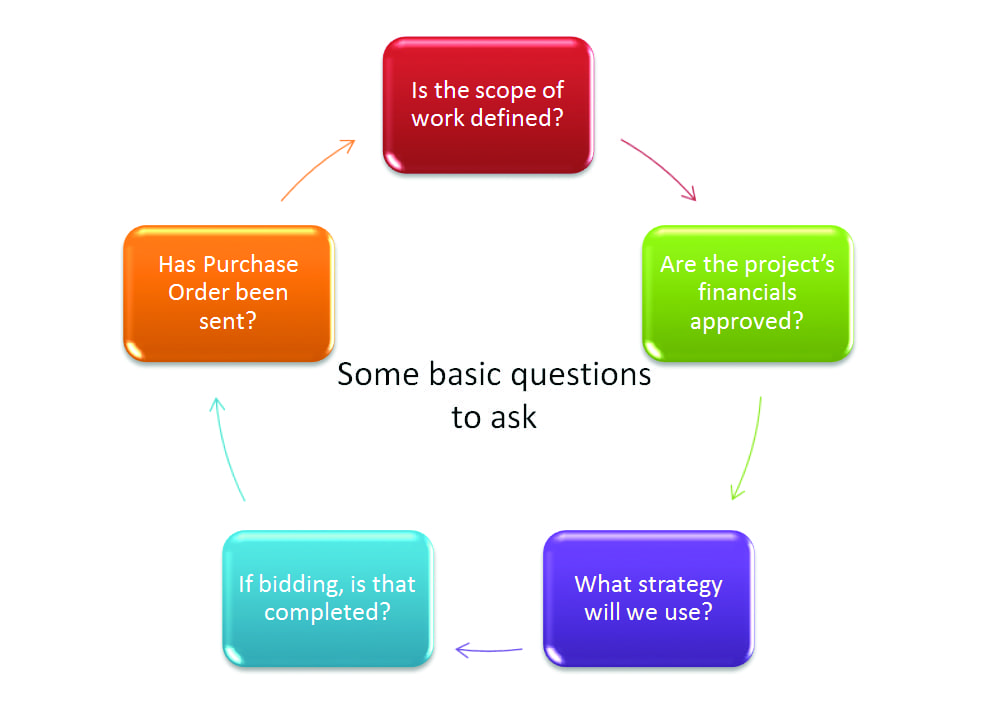 Many elaborate planning tools are available to help managers prepare for power plant outages. However, there is something to be said for keeping things simple. One modest tool that some NRG Energy facilities have utilized successfully is an Excel spreadsheet with green and red color codes based on yes or no answers to straightforward planning questions.
Many elaborate planning tools are available to help managers prepare for power plant outages. However, there is something to be said for keeping things simple. One modest tool that some NRG Energy facilities have utilized successfully is an Excel spreadsheet with green and red color codes based on yes or no answers to straightforward planning questions.
Power plant planned maintenance outages are very similar to each other across the power industry. Because power plants need to be reliable for the heavy summer and winter electricity demand, due largely to consumers heating and cooling requirements, maintenance outages are usually completed during the spring and the fall.
The outage team’s goal is to properly plan and execute outages so that plants can deploy capital effectively to achieve superior value during peak requirements. To help achieve that goal, companies have myriad technology choices to help with outage planning. There are software applications that can produce complex models showing subtasks of subtasks, all with estimated timing and critical paths.
Those tools are very useful during the actual outage, but the programs are often intimidating to many of the project team members and they can stifle collaboration during the planning process. Simplifying the outage planning process can help to more easily share the planning workload, open up the needed robust communications, and drive accountability to the individual stakeholders.
Share the Planning Workload
The outage planning process has several steps that can take months to complete. To coordinate the steps, the process requires that regular meetings be held with all of the key stakeholders in attendance. Often, the process involves one person asking the status of each preparation step while someone else provides the updates.
This drumbeat-style meeting can hinder feedback and participation of team members supporting the outage, creating somewhat of a silo effect. When people operate in these silos, you can find your outage just weeks away with several key steps still incomplete. To mitigate this, it is best to share the planning workload across multiple departments.
Tom Puthiyamadam is a principal with PwC U.S., and in his article “How to Build a Connected Workforce,” he suggested that when people work in silos, different units and capabilities are pulled in at various points in the process. For example, engineering might hand off a task to operations or the sourcing team might only be consulted after a design is completed. That type of approach won’t cut it in today’s world. Everything has to be simple, seamless, and intuitive from the start.
As more departments gain involvement throughout the process, it becomes more obvious who can support the various tasks for an upcoming outage. That added involvement could help reduce the outage planner’s workload and increase knowledge transfer between individuals with different experiences, allowing better preparation.
Frequently, unexpected project participants share valuable lessons learned from other outages. For example, it is not uncommon for safety, legal, or procurement staff (Figure 1) on our team to provide risk input when one plant is considering the services of a contractor that recently underperformed at a different location. If no other options exist and the contractor must still be selected for the job, the insight can help tailor terms and conditions to minimize risk as much as possible.
 |
| 1. Share the planning workload. To mitigate the risk of missing an action during the outage planning process, utilize resources across multiple departments. Courtesy: NRG |
Another huge benefit of pulling knowledge from multiple departments is that the work scopes used to engage contractors are likely to be more thoroughly developed. When scopes are better prepared and presented early to contractors, they can put the best team on the project and acquire the needed resources in advance. It’s important to keep in mind that other power plants and manufacturing facilities may also be planning outages, which could create a bandwidth problem for contractors.
Penny Font, editorial director for 10/12 Industry Report, wrote in the first quarter 2017 issue that some 7,000 additional craftsmen might be needed to handle the demand for maintenance turnarounds in the first quarter of 2017. If true, the law of supply and demand could cause outage costs to increase. Not engaging contractors early enough will almost always cost your company money that could otherwise have been saved. This is a common problem because the actual commitment is not made between companies until an accepted purchase order is in place. More times than not, the purchase order is one of the last actions in the planning process. When planning is done well, the commitments can be made in advance and companies can choose the best contractor at the best price.
Even when companies are successful in breaking down silos and obtaining more participation, many may still struggle to unleash a planning team’s full potential because of the complicated technology and difficult planning tools that are in use. To open up communications and increase success, simpler and more familiar tools may be the best choice.
In my experience, avoiding complex matrix charts and simply breaking large projects down into simple block diagrams that everyone can understand has been successful (Figure 2). Let’s consider a lube oil change project, for example. Many experienced personnel know all of the steps necessary to complete the project, and most would likely have it listed on a planning schedule, such as “Alpha compressor lube oil change budgeted for $100,000.”
 |
| 2. Ask basic questions. To ensure progress is being made on planning tasks, yes or no answers could be all that is needed. Courtesy: NRG |
In reality, when the job is broken down into individual parts, the lube oil change work task would have the following components: Determine the type of oil to be used, determine how to dispose of the old oil, create the work scope for the lube oil change out, solicit proposals from oil suppliers, etcetera. Also, by breaking down large projects into stand-alone work tasks, key players can easily understand their portion of the work.
In one situation, for example, it came to light that a contractor, engaged to perform boiler tube work, had not had its labor rates reviewed or vetted in two years. This type of discovery would not be possible without the needed, open communications throughout the planning process.
Open Communications with Simple Visual Aids
Just as mentioned above about complex technology, if conversations become too complex for many on the planning team, it could close down the needed communications. Visual aids can be an effective tool for opening up communications. However, the outage planning team should remember that using too many elaborate features in visuals could be counterproductive.
Gates Matthew Stoner wrote in his article, “Effectively Communicating with Visual Aids Made Simple,” (available online at: bit.ly/GMS_paper) that a presentation with too many elaborate features, which serve as powerful distractions, could decrease its effectiveness. In other words, technology can be intimidating to those unfamiliar with it and this can reduce outage-planning collaboration. Best-in-class companies will discover ways to work more effectively and more collaboratively by adopting information-sharing practices to streamline communication.
Too often, organizations don’t deploy technology innovations in a way that captures business value, says Puthiyamadam with PwC U.S. He adds that some companies still see employees using email and a note-taking application, instead of more costly systems that may have been implemented. Many times an outage planning team may end up spending large amounts of energy focusing on all the inputs that sophisticated systems require, when simple visuals could be all that is needed to get communication started. In most cases, reducing the planned project’s requirements down to the most basic yes or no questions is all that is needed to obtain a progress report about a required task.
Simple visual tools and feedback systems will increase productivity hands down. A perfect example of this is how video games resonate so well with so many people. Good video games provide easy to see scores and continuous feedback on a player’s progress. Taking the yes-or-no type questions mentioned above and converting them into a simple green or red light progress tracker, using an application such as Microsoft Excel, can mimic highly visible feedback much like a video game (Figure 3). This type of system may help people prioritize actions, because it provides a clear view of the items that have (in green) and have not (in red) been completed. When participants can clearly see the requirements, their buy-in is much easier to obtain. This accountability is very much needed to drive the robust dialog to ensure that effective decisions are being made.
 |
| 3. Simple visuals lead to answers. Using simple, familiar tools, like Microsoft Excel, to create a red/green traffic-light-style tracking sheet makes incomplete items highly visible. Courtesy: NRG |
Dialog, Accountability, and Teamwork
With a visual tool like this, people can easily understand their responsibilities and the sequence of actions they need to complete for a successful project. This can help drive the robust dialog and maintain the accountability needed when planning outage projects. It is great when companies break down silos, share the workload across departments, and make use of simple visual tools, but if no one is held accountable at the end of the day, the work can still be left incomplete.
Regularly conducting reviews against a progress tracker drives the message home that each person has a responsibility to complete their task and will be held accountable until they do so. This should ensure full attention up front when the outage planning begins. Manny Walters, global contracts manager for Phillips 66, wrote in the February 2017 issue of BIC Magazine that when people know they are going to be held accountable, they pay attention up front. When people have better-defined deliverables, magic can happen. A team acting as a unit should perform more effectively, as members start to take responsibility for the success of their teammates.
At NRG Energy, we have one goal above all others: We put safety first. This goal requires us to focus on safety for ourselves, our colleagues, and our families. It also asks that we foster a culture of continuous improvement by working and living safer every day of the year. We believe we are all in this together on one team—Team NRG.
Part of the continuous improvement process is to simplify, prioritize, and streamline information for better outcomes. Coupling ideas, such as a simpler outage planning tracker tool, with a deeply passionate team of experienced professionals has led to incredible results. For example, in one region, the improved supplier engagement obtained through the tracker tool has increased cost avoidance savings from $2.1 million in 2015 to $5.2 million in 2016. It is this type of outcome that helps us continue to make progress on our vision and mission to create a sustainable energy future by safely providing reliable, cleaner power that enhances people’s lives and delivers value to our stakeholders. ■
—Larry Kofton is plant supply chain manager for NRG Energy Inc.
https://www.powermag.com/simplify-outage-planning-to-increase-collaboration/